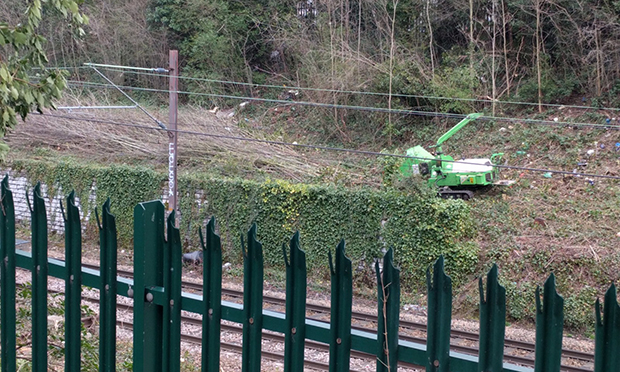Nature volunteers ‘angry and distressed’ after Network Rail cuts down stretch of trees in Stamford Hill

Residents are up in arms after Network Rail chopped down a swathe of trees on an embankment in Stamford Hill, warning that the “devastation” will harm local biodiversity.
The East and West Bank Nature Reserve is council-owned land managed by a group of volunteers, but Network Rail is responsible for the adjacent railway cutting.
The felling of hundreds of trees on the cutting has left the volunteers “angry and distressed”.
The group was of the understanding that an agreement with Network Rail would allow the embankment to flourish without significant interference “in order to preserve this important wildlife corridor which links the reservoirs and marshes to the north and west with Abney Park”.
In a statement, it said: “The reserve is home to numerous bird species and other wildlife. The destruction of hundreds of trees has taken place during the birds’ nesting season. This in itself is considered very poor practice in terms of maintaining biodiversity and neither the council nor local people were given notice or any information about it, contrary to Network Rail’s own policy.
“It appears that it’s not the first time Network Rail has pursued this ruthless method both in Hackney and elsewhere in the country but it should not be allowed to use ‘leaves on the line’ as an excuse for deforestation of this magnitude.”
Hackney Council said it “regrets” that Network Rail went ahead without letting it know, and said it was in discussions with the company over the matter.
Network Rail stressed that it is “confident the correct processes are being followed”.
Chainsaw workers at the scene told volunteers they were asked to “cut down anything which may cause leaves to fall on the line”.
The reserve group said that if this issue had been raised in advance, all parties could have worked together to address it in a “less drastic” way.
The group added that the use of poison on the tree stumps meant no re-growth would be possible.
The fellings have been reported to the Royal Society for the Protection of Birds due to its importance for local populations.
A wide variety of birds have been recorded on the site, including tawny owls, with volunteers making sure nesting seasons are not disturbed by works, putting in nesting boxes, clearing litter, and planting native shrubs, trees and wild flowers.
The council’s plan, written in 2013, adds that the Town Hall would continue to liaise with Network Rail “to ensure the railway cutting is managed in a way that complements the reserve”.
A Network Rail spokesperson said: “We’re very aware of the impact that removing trees and vegetation can have on local communities and we understand that this can come as a surprise for people who’ve got used to rows of trees or hedges near their homes or workplaces.
“Managing trees and vegetation is important to keep passengers and track workers safe. Trees and vegetation can obscure signals, touch live electrical equipment, blow or fall onto the tracks, undermine track foundations, or prevent our track staff having a safe place to wait while trains pass.
“This work also helps reduce leaves falling onto the line, which can affect train acceleration and braking, delaying trains during the autumn months and increasing the risk of an accident happening.
“We are confident that the correct processes are being followed and that bird nesting surveys have been completed as required.”
